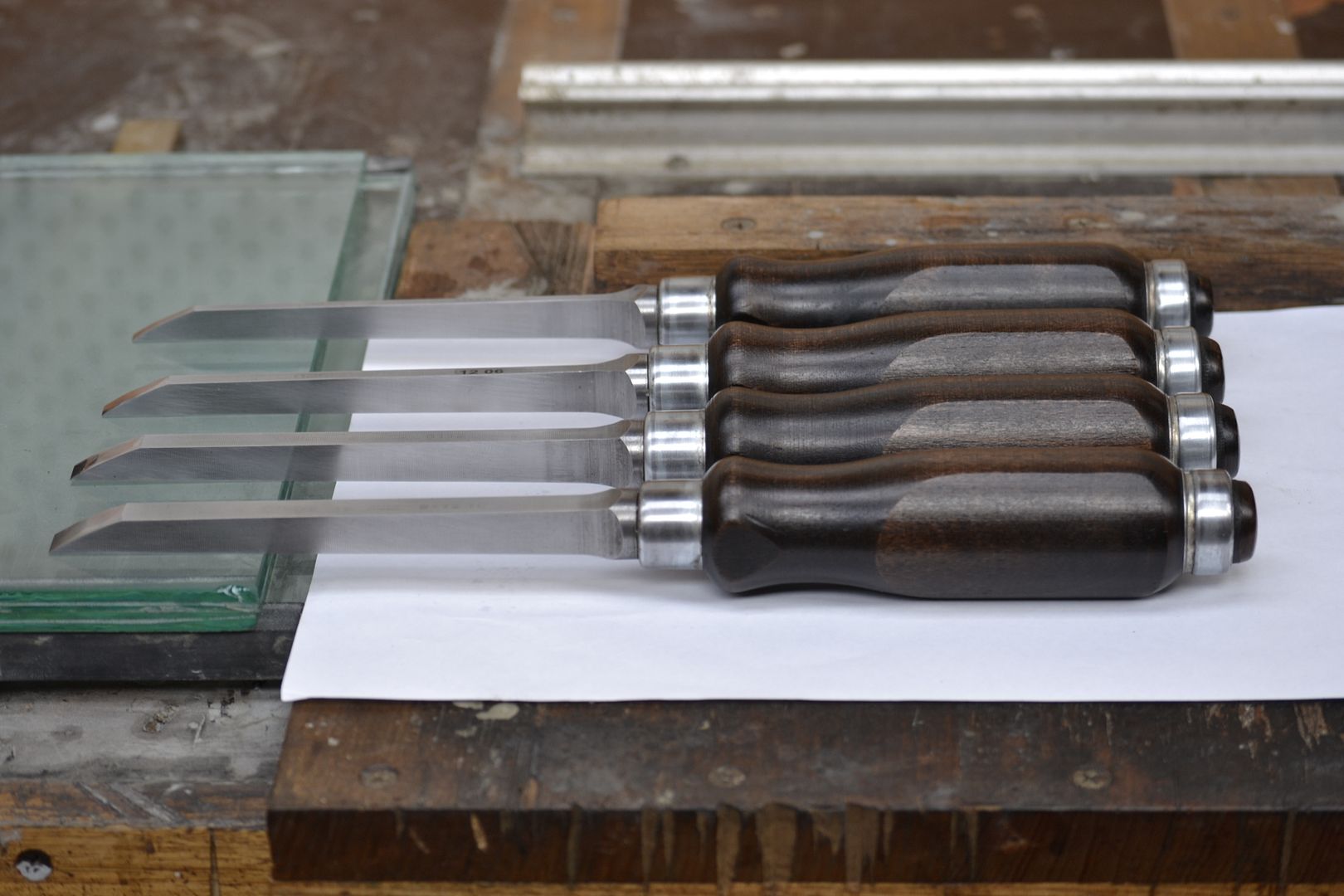Eric The Viking
Established Member
- Joined
- 19 Jan 2010
- Messages
- 6,599
- Reaction score
- 76
This isn't another sharpening thead as such, but...
... a couple of years ago I bought a socketed mortice 3/8" chisel by James Cam. It turns out to be quite old, but it has quite a lot of meat left in it, and I'd like to use it.
It seems to have a good steel edge, forge-welded to the rest of the blade. I couldn't get it to take a decent edge, and the suggestion on here was that a previous owner had sharpened past the hardening, so the steel was soft where it should be harder (for honing). So I have re-hardened it (I hope!), but I'm still having considerable difficulty getting it to take and hold a good edge.
So... I'll give it one more go as-is, then try hardening & tempering again, in case I got it wrong last time. But before I go a grinding, each time taking off a little more irreplaceable steel, I thought I'd check:
Given these are basically used for clobbering and levering, should I consider a steeper angle, so as to strengthen the business end, compared to my normal bevelled and firmer chisels, or should I stick to roughly 25 + 30?
Please bear in mind too that I'll get the basic angle(s) with a slow, wet grinder (Tormek-style), so there is a slight hollow-grind effect, which isn't ideal I'd guess, but the wheel has still got a decent diameter, so not too severe.
E.
PS: To avoid an obvious digression, freehand grinding+honing is out of the question. My hands are slowly getting worse (back at work at a keyboard is not helping, but I've no choice), and I don't have the dexterity any more and can't achieve it. Getting older really sucks.
... a couple of years ago I bought a socketed mortice 3/8" chisel by James Cam. It turns out to be quite old, but it has quite a lot of meat left in it, and I'd like to use it.
It seems to have a good steel edge, forge-welded to the rest of the blade. I couldn't get it to take a decent edge, and the suggestion on here was that a previous owner had sharpened past the hardening, so the steel was soft where it should be harder (for honing). So I have re-hardened it (I hope!), but I'm still having considerable difficulty getting it to take and hold a good edge.
So... I'll give it one more go as-is, then try hardening & tempering again, in case I got it wrong last time. But before I go a grinding, each time taking off a little more irreplaceable steel, I thought I'd check:
Given these are basically used for clobbering and levering, should I consider a steeper angle, so as to strengthen the business end, compared to my normal bevelled and firmer chisels, or should I stick to roughly 25 + 30?
Please bear in mind too that I'll get the basic angle(s) with a slow, wet grinder (Tormek-style), so there is a slight hollow-grind effect, which isn't ideal I'd guess, but the wheel has still got a decent diameter, so not too severe.
E.
PS: To avoid an obvious digression, freehand grinding+honing is out of the question. My hands are slowly getting worse (back at work at a keyboard is not helping, but I've no choice), and I don't have the dexterity any more and can't achieve it. Getting older really sucks.



































